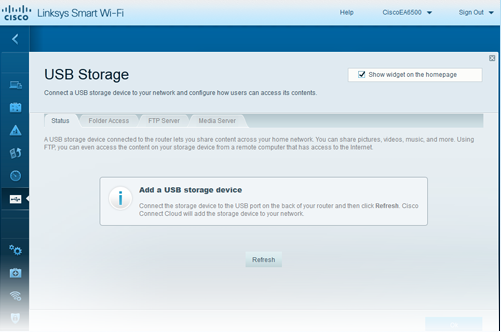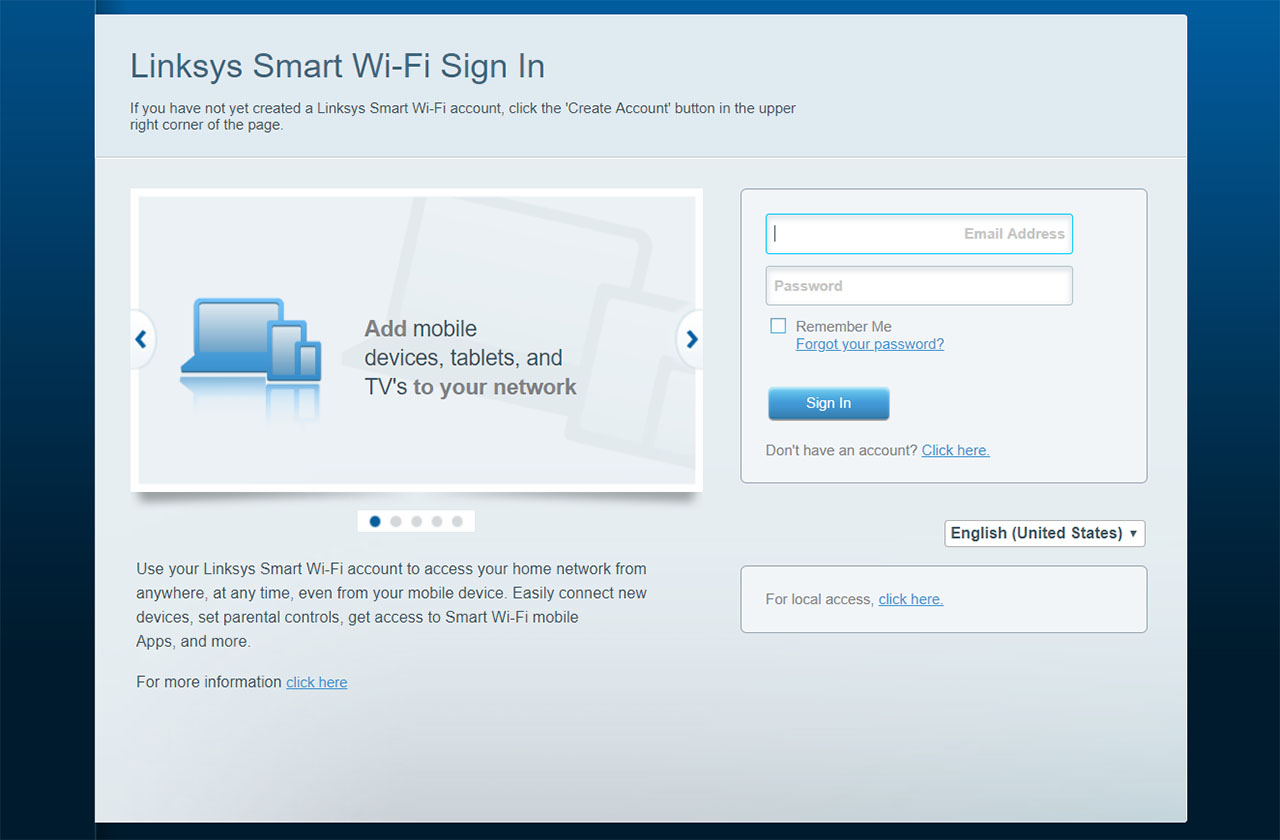

- #LINKSYS SMART WIFI APP FOR MAC PORTABLE#
- #LINKSYS SMART WIFI APP FOR MAC PASSWORD#
- #LINKSYS SMART WIFI APP FOR MAC WINDOWS 7#
No matter what I tried, every browser generated DNS lookup errors instead of the Guest network password prompt. After connecting to the Guest network, it put up its own pale yellow notice that "The Wi-Fi you are using () may require you to visit its login page". Click to open your browser." But, it falls on you to remember this in the future, the yellow balloon only popped up the first time the system connected to the Guest network.Ĭhrome OS 42 was much the same. After connecting to the Guest network, it prompted me, with the message shown below, "Additional log on information may be required.
#LINKSYS SMART WIFI APP FOR MAC WINDOWS 7#
Windows 7 seemed aware of the captive portal. It seems Microsoft is up to something, but I can't explain what. On Windows 8, I used the Chrome browser, and after entering the password I was taken to msn.com, which was NOT the website I asked for initially. That is, after joining the Guest network and going to any website, I was prompted for the Guest network password and after providing it, could get to the intended website. Only WPA2 Enterprise may need an Internet connection to validate users to the router.īut, even with the router online, the captive portal was still a bit problematic. If the WiFi network is open, or using WEP, WPA Personal or WPA2 personal, the router can handle things on its own. With normal WiFi networks, it matters not if the other side of the router (the WAN side) is connected to the Internet. There is no reason for this.Īny connection from a WiFi device to a router is just that, a connection between the device and the router. The problem, it turns out, was because the router was off-line. Most of the systems I tested failed to generate the password request above, even when using a browser to visit a website. I was able to confirm that the captive portal on the Linksys EA6200 asks for the password with HTTP.Īlong the way, however, I found another problem with the captive portal. Each system let me connect to an open WiFi network without a peep. No one else issues a prominent warning either. With Windows 7 and 8, Microsoft still displays a warning, but it's easier to overlook, they did away with the standalone modal notice. As shown below, it is really in your face before you connect, warning that "Information sent over this network is not encrypted and might be visible to other people."

The oldest system I tried, Windows XP, had the hardest to miss warning.

But testing the Linksys EA6200 illustrated how the security warnings about open networks are being de-emphasized. End users are on their own.Īs a Defensive Computing guy, I tend to avoid open, unencrypted wireless networks.
#LINKSYS SMART WIFI APP FOR MAC PORTABLE#
Linksys does explain how their captive portable works - but only to the person that sets up the router. Bad documentation is the rule in IT rather than the exception. Not only were the hotel guests un-informed, so too was the person at the front desk. I told them to run a web browser and go to any website. One day, in the lobby, some guests were having WiFi problems. Last summer, a hotel where I stayed used a captive portal to inform hotel guests of their policies before letting them out to the Internet.

If, after joining the Guest network, a new user starts their online day with email, messaging or anything but a web browser, they can't get online. I say this because captive portals force new users on the network to start their online experience with a web browser - and, by and large, no one tells them this. The use of a captive portal is indicated by an exclamation point in an orange circle.Ĭaptive portals make sense for businesses that want to display their Terms of Service before letting people get online, but it's much too confusing for home users. Noticeably missing from the Linksys Guest network configuration, as Hoffman reported, is encryption.


 0 kommentar(er)
0 kommentar(er)
